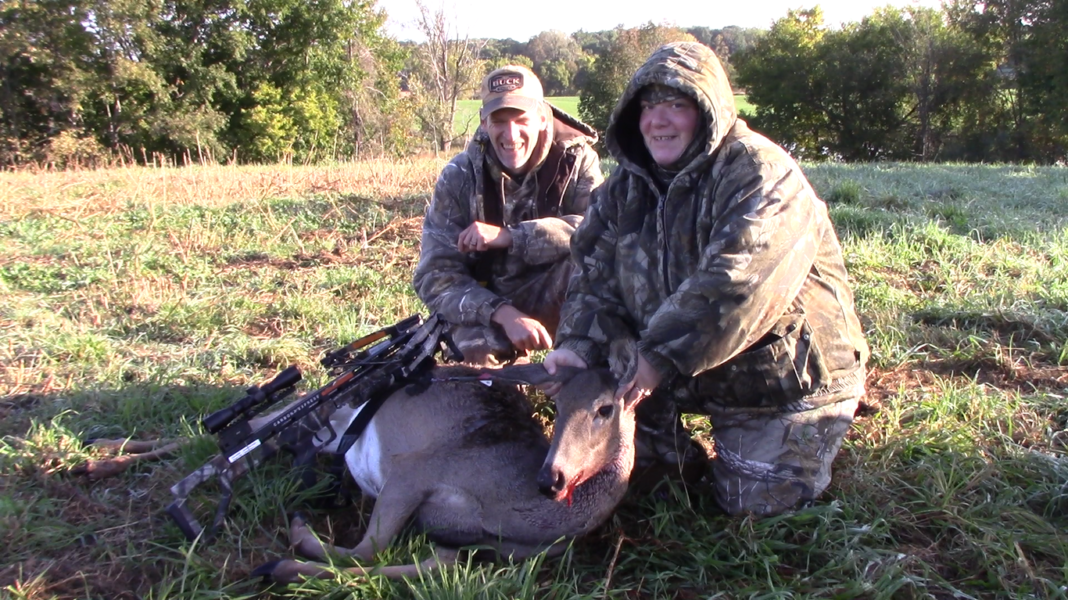Countless articles have been written on the subject of bedding areas. How to hunt them, where to find them, and so on. But what makes a deer bed where it does? Do deer pick one area over another, or do they simply lay down when they get tired?
Actually, a good amount of thought goes into choosing a bedding area. And, there are things you can do to make a specific part of your hunting property more appealing to use as a bedding area. I for one would rather have deer spending their days bedded on my property rather than the neighbor’s property.
For a deer to want to bed in any area, it has to feel safe to the deer. This is best done by creating a sanctuary. A sanctuary should never be stepped foot on unless it is to recover a wounded animal. That means absolutely no scouting (including trail cameras), and shed hunting inside the sanctuary.
Just a small piece of your total acreage will serve good as a sanctuary. As little as 5 acres will work just fine. Once the sanctuary is in place, and everybody that has access to the property knows about it being off-limits, make it a place whitetails want to bed.
Not only does the area have to be a safe place from human intruders, but coyotes too. Coyotes are the only other threat besides humans that a whitetail has in this part of the country. Luckily it is possible to reduce the number of coyotes on your property.
Fortunately I love to trap, and trapping is a very effective method to control coyotes, but trapping is not for everyone. Trapping coyotes is not easy, it takes time to learn, and once you learn to trap coyotes it takes a lot of time. Trappers are always looking for new ground to trap. There are not a lot of trappers anymore, so it will take some networking to find one, but they are out there.
Maybe hunting for coyotes is more your thing. Hunting coyotes can be done for several months out of the year, and even year-round in most states. Also, I never pass up the opportunity to shoot a coyote while deer hunting either. I have been told the shot will end the hunt, but a deer is not going to come in with a coyote in the area. Plus, I have shot a coyote, and 15 minutes later shot a whitetail.
Trapping and hunting coyote improves bedding areas, increases whitetail fawn survival rate, and if the coyote was taken in the winter with a prime pelt, it can be sold for a good profit.
A tree that is hinge-cut will provide good bedding cover, and even food for whitetails. To hinge-cut a tree, cut halfway through a small tree 5 to 6 feet above the ground. The tree will drop to the ground, continue to grow, and offer browse for the deer to feed on.
Do not drop too many trees. More is not always better. Deer will not like so many hinge-cut trees that the can’t see downwind for possible danger. Just drop enough trees that they criss-cross one another.
Sometimes a few trees need to be taken completely out. In the fall, deer prefer to bed in grassy areas rather than rough areas with sticks and stones. To grow grass, it takes sunlight. Cut a few trees to allow the sun to reach the forest floor. This will let grasses grow that provide a nice bad as well as food. To help grasses get a good start consider sowing grass seed in the summer. Cutting trees also lets the sun’s rays get through to where the deer are, something the deer crave in the cold winter months.
When you are creating a place where whitetails will want to bed, you first have to consider how you will get to and from your stand, and how you will hunt the area.
When you are approaching your stand, you do not want to have your scent blown into the bedding area.
It does not take a big chunk of your property to create a bedding area. If you can create two or three bedding areas the mature bucks will choose the best for themselves, and let the smaller bucks have the others. Instead of letting the smaller bucks bed on the other side of the fence, I want to have a place for them on my property too.
Do not be tempted to check to see if the deer are using the area as you hope for. Be confident, and know that if you made the area more inviting to be used as a bedding area, deer will take full advantage of it.
It does not take a lot of time and money to create a bedding area. A few hours, a small saw, and maybe even some coyote hunting or trapping, and you can create an area deer want to bed.



















![The Best Deer Camp Chili [VIDEO] Deer Chili Ingredients, Tomatoes, Chili Spices](/wp-content/uploads/2015/10/Deer-Chili-Deer-Camp-Recipe-218x150.jpg)
![How to Call Elk Early in the Season [VIDEO]](/wp-content/uploads/2016/08/byers003-218x150.jpg)




![Idiots Disturb Hunter: How Would You Have Handled It? [VIDEO]](/wp-content/uploads/2015/10/DSC00110-e1474487693878-100x70.jpg)
![Albino Buck Shocked to Shed His Antlers [VIDEO]](/wp-content/uploads/2015/10/AlbinoDeer-100x70.jpg)